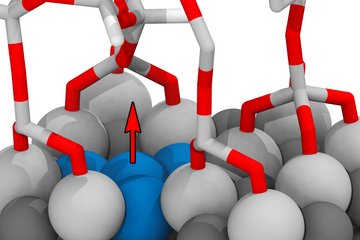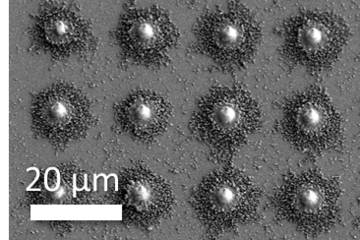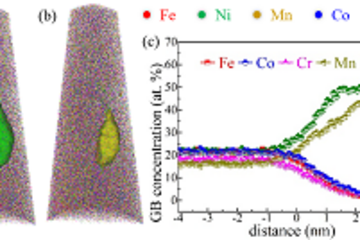All genres
61.
Poster
Quantum-mechanics-based study of multi-scale elastic properties of hierarchical biocomposites. Prospects of bionics for functional Materials Science, Montan University Leoben, Leoben, Austria (2010)
62.
Poster
Ab initio based study of multi-scale elastic properties of hierarchical biocomposites. Psi_k Conference 2010, Berlin, Germany (2010)
63.
Poster
Arthropod cuticle: A biological multi-functional composite used as template for nano-to-macro-scale hierarchical modeling. Materials Science and Engineering 2010, Darmstadt, Germany (2010)
64.
Poster
Hierarchical modeling of the mechanical properties of lobster cuticle from nano‐ up to macroscale: The influence of the mineral content and the microstructure. 4th International Conference on Multiscale Materials Modeling, Tallahassee, FL, USA (2008)
65.
Poster
Investigation and Modeling of the Elastic Properties of Lobster Cuticle Depending on its Grade of Mineralization. MRS Spring Meeting, San Francisco, CA, USA (2008)
66.
Poster
Fracture Behavior and Shear Resistance of Lobster Cuticle. MRS Fall Conference, Boston, MA, USA (2006)
67.
Poster
Structure and texture analysis of chitin-bio-nanocomposites using synchrotron radiation. MRS Spring Meeting, San Francisco, CA, USA (2005)
68.
Poster
Mesostructure, microstructure and anisotropy of the lobster cuticle. MRS Spring Meeting, San Francisco, CA, USA (2005)
69.
Poster
Influence of sample preparation and anisotropy on lobster claw studied by LOM, SEM and TEM. Focus on Microscopy, Jena, Germany (2005)
70.
Teaching
Ab-initio based multi-scale approaches to the elasticity of metallic polycrystals and hierarchical biocomposites. Lecture: XI National Congress on Theoretical and Applied Mechanics, Borovets, Bulgaria, September 02, 2009 - September 05, 2009
71.
Teaching
Crystal Plasticity and Fresh Lobster. Lecture: Lecture, BAM, Berlin, Germany, August 23, 2006
72.
Teaching
Micromechanics of Metallic Crystals and Fresh Lobster. Lecture: Lecture at MPI für Mikrostrukturphysik, Halle, Germany, 2006
73.
Teaching
Principles to design and simulate hierarchical materials with property-relevant structural features.
74.
Thesis - PhD
Microstructure and mechanical properties of the exoskeleton of the lobster Homarus americanus as an example of a biological composite material. Dissertation, RWTH Aachen, Aachen, Germany (2008)











